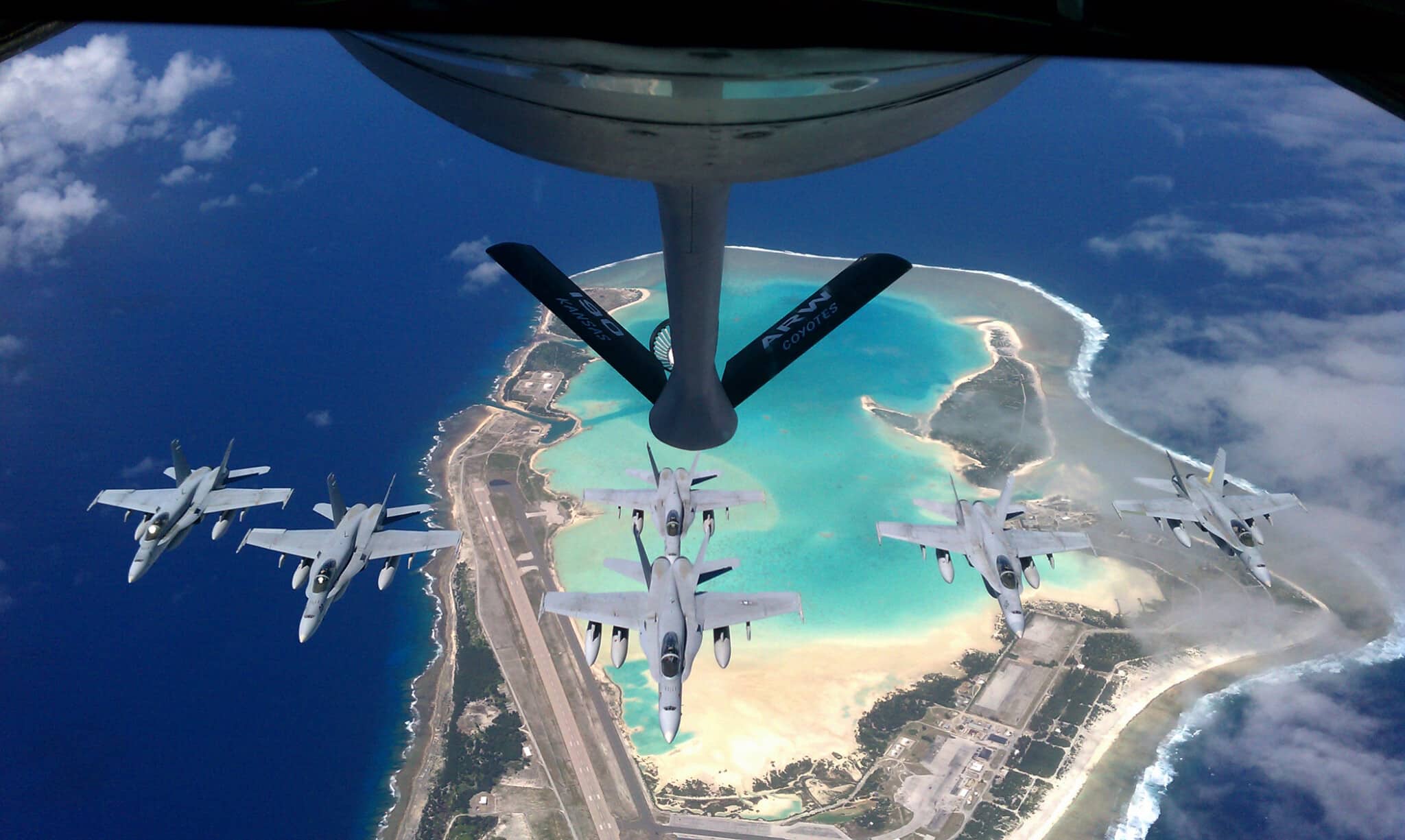December 15, 2020 | Defending Forward Monograph
Lessons From the European Deterrence Initiative
December 15, 2020 | Defending Forward Monograph
Lessons From the European Deterrence Initiative
Benjamin Franklin famously wrote, “an Ounce of Prevention is worth a Pound of Cure.”1 While Franklin was certainly not thinking of national security, the United States would be wise to apply the principle to deterring Chinese aggression. Leaders of the Senate and House armed services committees included a provision (section 1251) in the National Defense Authorization Act for Fiscal Year 2021 Conference Report that would establish a Pacific Deterrence Initiative (PDI).2
If the bill is signed into law, the Pentagon can model the PDI on a similar effort in Europe, launched after Russia’s 2014 invasion of Ukraine and illegal annexation of Crimea. Distracted elsewhere and confused regarding Putin’s intentions, Washington had allowed the military deterrence of Moscow in eastern Europe to atrophy. Putin saw his opportunity and pounced.
Having learned some tough lessons, the United States belatedly created the European Reassurance Initiative, later called the European Deterrence Initiative (EDI).3 According to testimony in February 2020 by General Tod Wolters, the commander of U.S. and NATO forces in Europe, the EDI has increased “forward-stationed and rotational forces,” funded exercises and training, built partner capacity, and significantly improved prepositioned stocks and vital military infrastructure. The EDI, Wolters said, has been “critical to our deterrence and posture successes.”4

A U.S. Air Force KC-135 Stratotanker refueling aircraft prepares to refuel Navy F/A-18 Hornets over Wake Island during an escort mission from Japan to the United States. (U.S. Air Force photo by Staff Sargent Ben Fulton)
That is exactly what the United States must do without delay in the Indo-Pacific. Some in the Pentagon are concerned that a PDI might reduce flexibility, but it is past time to align U.S. budgets and programs with rhetoric in the Pacific. Or as Representative Mac Thornberry, ranking member of the House Armed Services Committee, has said: “It is time to put our money where our mouth is.”5
In standing up a PDI, three lessons from Europe are particularly instructive. The first: waste no time in getting started. Before Moscow’s aggression in Ukraine, Washington dithered and ignored warning signs. Russia’s 2008 invasion and occupation of large portions of Georgia, along with Russia’s subsequent military modernization efforts, should have set off alarms.
The United States must not make the same mistake with the CCP’s activities in the Indo-Pacific. The warning signs are clear in Hong Kong, along the border with India, in the South China Sea, and in the seas and skies surrounding Taiwan.6 The top U.S. military officer in the Indo-Pacific has warned that the U.S. military balance of power with China continues to become “more unfavorable.”7 Washington should not wait for Beijing to invade Taiwan or attack U.S. vessels in the South China Sea before taking action.8
A delay would be particularly harmful because building the kind of deterrence referenced by Wolters takes time. Finite budgets and industrial capacity contribute to protracted timelines when procuring equipment.9 Similarly, the need for defense-cooperation agreement negotiations, host-nation approvals, and contractor capacity extends the timeline to build the necessary infrastructure. In the case of the EDI, only a handful of the more than 70 authorized EDI military construction projects have been completed since the program began in 2015. Seven years in, there is still much work to do.10
The PDI may take years as well. Washington should not expect that it can quickly reverse decades of neglect in the Indo-Pacific. Indo-Pacific Command’s call for $20 billion over the next six years to implement the NDS further demonstrates the need to get started without delay.11
There is also a relevant lesson when it comes to how this effort is funded. Congress has authorized and funded the EDI using the Overseas Contingency Operations (OCO) account.12 That account was originally intended to fund short-term expenses associated with post-9/11 conflicts. Today, the continued use of the OCO account for major multi-year initiatives is a workaround for budget limits associated with the 2011 Budget Control Act.13 This approach comes at a cost in terms of program predictability, prioritization, and assessment.14
Due to the OCO account’s one-year term, versus the base budget’s five-year outlook, the abridged OCO planning cycle hinders congressional oversight, undercuts messaging to key allies and great power adversaries, and hampers the Pentagon’s ability to measure progress as part of the regular planning, programming, budgeting, and execution process.15 Funding the PDI with the base budget instead of OCO will require Congress to establish priorities and pursue bipartisan consensus. That is exactly what is required to ensure the PDI’s long-term success.
A third lesson learned from the EDI is the importance of investing in the less glamorous but vital capabilities related to infrastructure and logistics. To deter additional Russian aggression in Eastern Europe, the United States used the EDI to invest in airfields and other facilities necessary to transport and support combat forces. Wolters believes those critical investments have been essential in building deterrence: “Through EDI, we have enhanced our presence in theater to assure Allies and deter adversaries.”16
The United States and its partners in the Indo-Pacific need to do the same. A recent report by Indo-Pacific Command emphasized the role of infrastructure in “distributing forward-deployed forces across the breadth and depth of the battle space.” That will require investment in the first and second island chains to facilitate the survival, mobility, dispersal, and lethality of U.S. forces.17
In addition to avoiding diversion of PDI funds for unrelated projects in the United States, Congress and the Pentagon should focus on airfields, equipment pre-positioning, port facilities, munitions, and fuel storage. The PDI should initially direct investments toward the most urgent needs and feasible opportunities. Efforts should be made to expedite projects by streamlining long-lead agreements, planning, and design. Projects in U.S. territories may offer the best opportunities for quicker completion. Additionally, building upon airfield expansion efforts on Tinian and acting on Palau’s recent overture to host U.S. military ports, bases, and airfields offer good examples of where immediate action should occur.18 Meanwhile, the Department of State should actively explore additional opportunities with allies and partners, especially those in the first island chain.
Quickly building this infrastructure would enable much-needed distribution of critical capabilities, flexibility, resiliency, and maneuverability. Crucially, the rapid dispersal of U.S. forces, with myriad alternative sites for use in a contingency, would complicate Beijing’s planning and increase deterrence.19
This concept is well-integrated in the EDI’s military construction program, which encompasses 16 host nations and spans over 25 different sites. The same needs to be done in the Indo-Pacific.
PDI infrastructure investments should also be aligned with Indo-Pacific Command’s top weapons system priorities. That includes facilities needed to field the command’s top unfunded priority: “360-degree persistent and integrated air defense capability in Guam.” This improved air defense would help address China’s missile arsenal, which is growing in quantity, capability, and range. That would help shield Guam – an island Indo-Pacific Command calls the “most important operating location in the Western Pacific.”20
High-profile weapons systems built in the districts and states of well-positioned members of Congress will usually receive the political support they need. But the PDI is crucial because it will ensure similar support for the vital infrastructure needed in the Pacific.
As Washington moves to create a PDI, there is much to learn from the experience in Europe. If Washington applies those lessons appropriately, Americans can benefit from Franklin’s sage advice – and gain an edge in the great power competition that promises to shape the 21st century.
The views expressed or implied in this commentary are solely those of the authors and do not necessarily represent the views of the U.S. Air Force, the Department of Defense, or any other U.S. government agency. A similar version of this chapter originally appeared in Breaking Defense on August 28.21
